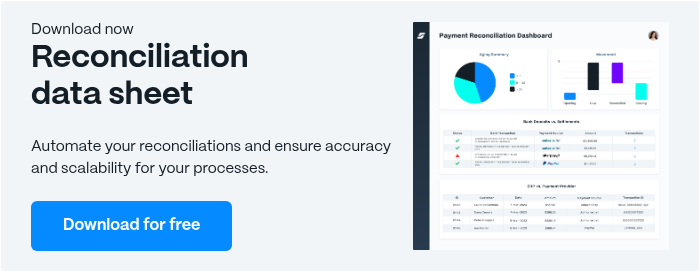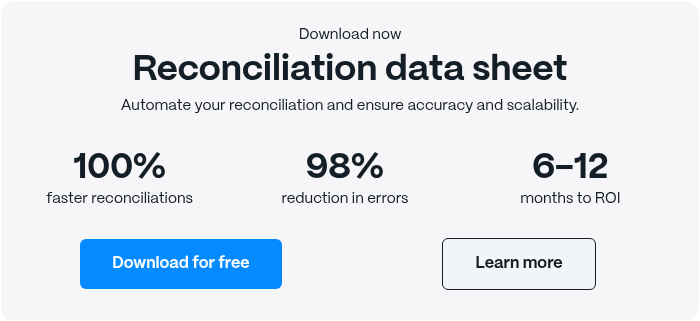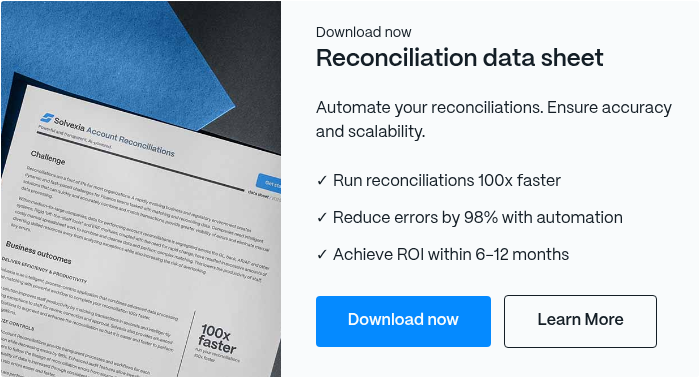How to Identify and Resolve Reconciliation Discrepancies

Financial reconciliation is a critical process for maintaining accurate financial records, but it's not uncommon to encounter discrepancies along the way. These reconciliation discrepancies can range from simple data entry errors to more complex issues like fraud. In this blog post, we'll explore how to identify and resolve these discrepancies, ensuring your financial records remain accurate and reliable.
Coming Up
What are Reconciliation Discrepancies?
Understanding Financial Reconciliation and its Importance
Common Types of Reconciliation Discrepancies
Steps to Identify Reconciliation Discrepancies
How to Resolve Reconciliation Discrepancies
Tools and Software for Simplifying Reconciliation
Best Practices for Effective Financial Reconciliation
What are Reconciliation Discrepancies?
Reconciliation discrepancies are differences or inconsistencies found when comparing two or more sets of financial records that should match. These discrepancies can occur between your internal financial records and external documents such as bank statements, or between different internal financial reports.
Common examples of reconciliation discrepancies include:
- Mismatched transaction amounts
- Missing transactions in one set of records
- Duplicate transactions, which can lead to inaccuracies in financial records and errors in expense reporting
- Timing differences between when a transaction is recorded and when it clears the bank
- Errors in data entry or calculation
Identifying and resolving these discrepancies is crucial for maintaining accurate financial records and ensuring the integrity of your financial reporting. In the following sections, we’ll delve deeper into the types of discrepancies, how to identify them, and strategies for resolution.
Understanding Financial Reconciliation and its Importance
Definition of Financial Reconciliation
Financial reconciliation is the process of comparing two sets of records to ensure they match and are accurate. This typically involves comparing your internal financial records with external documents such as bank statements. The goal is to identify and resolve any discrepancies between these records, ensuring that your financial data is complete, accurate, and up-to-date.
Importance of Regular Reconciliation
Regular reconciliation is crucial for several reasons:
- Accuracy: It helps maintain the accuracy of your financial records, ensuring that all transactions are properly recorded and accounted for.
- Error Detection: Reconciliation can help identify errors, whether they're simple data entry mistakes or more serious issues like fraud.
- Financial Health: By keeping your records accurate, you have a clearer picture of your organization's financial health, which is essential for making informed business decisions.
- Compliance: Many industries have regulatory requirements for financial reporting. Regular reconciliation helps ensure compliance with these regulations.
- Audit Preparation: When your records are regularly reconciled, you're better prepared for audits, whether internal or external.
The consequences of not reconciling accounts regularly can be severe. These may include:
- Inaccurate financial statements
- Poor decision-making based on incorrect financial data
- Increased risk of fraud going undetected
- Potential legal and regulatory issues
- Loss of stakeholder confidence
By understanding the importance of reconciliation and regularly addressing discrepancies, you can maintain the integrity of your financial records and the health of your organization.
Common Types of Reconciliation Discrepancies
When performing financial reconciliation, you may encounter various types of discrepancies. Understanding these can help you identify and resolve issues more efficiently. Here are the four main types of reconciliation discrepancies:
Mistakes
Data entry errors are one of the most common sources of reconciliation discrepancies. These can include:
- Transposition errors: Switching the order of digits (e.g., entering 53 instead of 35)
- Omission errors: Forgetting to record a transaction
- Duplication errors: Recording the same transaction twice
Example: A bookkeeper mistakenly enters a $1,500 payment as $1,050, causing a $450 discrepancy in the reconciliation process.
Timing Differences
Timing differences occur when transactions are recorded in different periods in your books compared to when they appear on bank statements. Common examples include:
- Outstanding checks: Checks you've written but haven't been cashed yet
- Deposits in transit: Deposits you've recorded but haven't been processed by the bank
Example: You write a check on June 30th, but it doesn't clear the bank until July 3rd. This creates a timing difference in your month-end reconciliation.
Missing Transactions
Sometimes, transactions may be entirely missing from either your records or the bank statement. This can happen due to:
- Overlooked transactions: Small transactions that were forgotten or overlooked
- Bank errors: Rare cases where the bank fails to record a transaction
Example: A small monthly subscription fee is automatically deducted from your account, but you forgot to record it in your books.
Fraud
While less common, fraud can lead to significant reconciliation discrepancies. This might include:
- Unauthorized transactions: Purchases or withdrawals made without approval
- Manipulated records: Intentionally altering financial records to hide fraudulent activity
Example: An employee makes unauthorized purchases using the company credit card and alters the records to hide the transactions.
By familiarizing yourself with these common types of reconciliation discrepancies, you'll be better equipped to spot and address issues in your financial records.
Steps to Identify Reconciliation Discrepancies
Identifying reconciliation discrepancies is a crucial step in maintaining accurate financial records. Here are the key steps to effectively spot these discrepancies:
1. Reviewing Bank Statements
- Obtain recent bank statements: Ensure you have the most up-to-date statements for all accounts.
- Compare line by line: Carefully review each transaction on the bank statement against your internal records.
- Mark matching transactions: Use a system (e.g., checkmarks or highlighting) to indicate transactions that match between your records and the bank statement.
- Note discrepancies: Pay special attention to any transactions that don't match or are missing from either record.
Tip: Use online banking platforms to download statements in various formats (CSV, PDF) for easier comparison with your internal records.
2. Cross-Checking Financial Records
- Review internal ledgers: Examine your general ledger, accounts payable, and accounts receivable records.
- Compare against source documents: Match transactions with invoices, receipts, and other original documents.
- Verify transaction details: Check that dates, amounts, and descriptions match across all records.
- Investigate discrepancies: Any mismatches between internal records and source documents should be flagged for further investigation.
Tip: Implement a document management system to organize and easily retrieve source documents for cross-checking.
3. Running Reconciliation Discrepancy Reports
- Use accounting software: Most modern accounting systems have built-in reconciliation tools.
- Generate reconciliation reports: These reports typically highlight discrepancies between your records and bank statements.
- Review unreconciled items: Pay close attention to any transactions that the software couldn't automatically match.
- Analyze historical trends: Look for patterns in discrepancies over time, which might indicate systemic issues.
Tip: Schedule regular reconciliation report runs (e.g., weekly or bi-weekly) to catch discrepancies early.
Additional Tips for Effectively Spotting Discrepancies:
- Use a consistent methodology: Develop a standardized process for reconciliation to ensure thoroughness and consistency.
- Implement segregation of duties: Have different individuals responsible for recording transactions and performing reconciliations to reduce the risk of fraud.
- Leverage technology: Use automated reconciliation tools to streamline the process and reduce human error.
- Stay vigilant for red flags: Be alert to unusual patterns or transactions that seem out of place.
- Maintain a skeptical mindset: Don't assume all discrepancies are simple mistakes; be open to the possibility of more serious issues like fraud.
By following these steps and tips, you'll be well-equipped to identify reconciliation discrepancies in your financial records.
How to Resolve Reconciliation Discrepancies
Once you've identified discrepancies in your financial reconciliation, the next crucial step is to resolve them. Here's how to address the most common types of discrepancies:
Correcting Data Entry Errors
- Double-check the original source document: Verify the correct information from invoices, receipts, or other primary sources.
- Make the necessary corrections: Update your records with the accurate information.
- Document the change: Note the reason for the correction and who made it for audit purposes.
- Review and approve: Have a supervisor or independent party review and approve the correction.
Example: If you discover a transposition error where $530 was entered as $350, correct the amount in your system and note the reason for the change.
Adjusting Timing Differences
- Identify outstanding items: Create a list of checks that haven't cleared or deposits not yet processed by the bank.
- Track these items: Keep a separate record of these timing differences.
- Adjust your reconciliation: Account for these items in your reconciliation process.
- Follow up on old items: Investigate any checks or deposits that remain outstanding for an unusually long time.
Example: For a check written on the last day of the month but not yet cashed, note it as an outstanding item in your reconciliation and monitor it in the following month.
Recording Missing Transactions
- Investigate the discrepancy: Determine why the transaction was missed (oversight, bank error, etc.).
- Gather supporting documentation: Collect any relevant invoices, receipts, or bank communications.
- Record the transaction: Enter the missing transaction into your accounting system.
- Adjust your records: Update any affected totals or balances.
Example: If you discover a forgotten subscription payment, record it in your system and adjust your cash balance accordingly.
Implementing Fraud Prevention Measures
- Report suspected fraud: If you suspect fraud, report it to management and relevant authorities immediately.
- Conduct a thorough investigation: Work with internal audit or external professionals to investigate the extent of the fraud.
- Strengthen internal controls: Implement or improve measures such as segregation of duties, approval processes, and regular audits.
- Enhance monitoring: Increase the frequency of reconciliations and implement automated fraud detection tools.
Example: If unauthorized transactions are discovered, report them to the bank, cancel compromised cards or accounts, and review and strengthen access controls.
General Tips for Resolving Discrepancies:
- Address issues promptly: The sooner you resolve discrepancies, the easier it is to track down the cause and fix it.
- Maintain clear documentation: Keep detailed records of all discrepancies found and how they were resolved.
- Learn from patterns: If you notice recurring types of discrepancies, address the root cause to prevent future occurrences.
- Communicate with stakeholders: Keep relevant parties (management, auditors, etc.) informed about significant discrepancies and their resolution.
- Update procedures: Use insights gained from resolving discrepancies to improve your reconciliation processes.
By following these steps and tips, you can effectively resolve reconciliation discrepancies and maintain the accuracy of your financial records.
Tools and Software for Simplifying Reconciliation
As businesses grow and financial transactions become more complex, using specialized tools and software can significantly streamline the reconciliation process. Here's what to look for in reconciliation software and some top solutions to consider:
Features to Look for in Reconciliation Software
- Automated Matching: The ability to automatically match transactions between your books and bank statements.
- Data Import Capabilities: Easy import of data from various sources, including bank statements, credit card statements, and accounting software.
- Customizable Rules: Options to create custom matching rules based on your specific reconciliation needs.
- Exception Handling: Tools to flag and manage exceptions or discrepancies for review.
- Reporting: Comprehensive reporting features to track reconciliation progress and identify trends.
- Integration: Seamless integration with your existing accounting or ERP systems.
- Audit Trail: Detailed logs of all actions taken during the reconciliation process for audit purposes.
- Security Features: Strong security measures to protect sensitive financial data.
Top Reconciliation Software Solutions
1. Solvexia
- Strengths: Powerful data transformation, extensive automation capabilities, and significant productivity gains for complex financial reconciliations
- Best for: Mid to large enterprises looking for a comprehensive and customizable reconciliation and finance process automation solution
2. BlackLine
- Strengths: Comprehensive financial close and reconciliation platform
- Best for: Large enterprises with complex reconciliation needs
3. Fiserv Frontier Reconciliation
- Strengths: Robust matching capabilities and workflow management
- Best for: Financial institutions and companies with high transaction volumes
4. ReconArt
- Strengths: Flexible configuration and strong data transformation capabilities
- Best for: Mid-size to large companies across various industries
5. Adra by Trintech
- Strengths: User-friendly interface and quick implementation
- Best for: Small to mid-size businesses looking for an easy-to-use solution
6. FloQast
- Strengths: Close management and reconciliation specifically designed for accountants
- Best for: Accounting teams looking to streamline their month-end close process
When choosing reconciliation software, consider factors such as:
- The size and complexity of your business
- Your current accounting software and potential integration needs
- Your budget for reconciliation tools
- The volume of transactions you need to reconcile
- Any industry-specific requirements you may have
Remember that while these tools can greatly simplify the reconciliation process, they don't replace the need for skilled professionals who understand financial reconciliation principles. The best approach is often a combination of powerful software and knowledgeable staff.
Best Practices for Effective Financial Reconciliation
Implementing these best practices can significantly improve the accuracy and efficiency of your financial reconciliation process:
Regular Reconciliation Schedule
- Set a consistent schedule: Perform reconciliations at regular intervals (e.g., daily, weekly, or monthly) depending on transaction volume.
- Prioritize accounts: Reconcile high-risk or high-volume accounts more frequently.
- Align with reporting cycles: Schedule reconciliations to support timely financial reporting.
- Automate where possible: Use software to schedule and remind staff of upcoming reconciliations.
Tip: For most businesses, reconciling major accounts at least monthly is a good baseline practice.
Internal Controls and Oversight
- Segregation of duties: Ensure that the person performing reconciliations is not the same person recording transactions.
- Review process: Implement a system where reconciliations are reviewed by a supervisor or independent party.
- Documentation: Maintain clear documentation of reconciliation procedures and results.
- Access controls: Limit access to financial systems and reconciliation tools to authorized personnel only.
- Regular audits: Conduct periodic internal audits of the reconciliation process to ensure compliance with procedures.
Tip: Consider rotating reconciliation duties among qualified staff to maintain fresh perspectives and reduce the risk of fraud.
Training and Resources for Staff
- Initial training: Provide comprehensive training on reconciliation procedures for new staff.
- Ongoing education: Offer regular refresher courses and updates on new reconciliation tools or processes.
- Clear guidelines: Develop and maintain detailed reconciliation manuals and process documents.
- Support system: Establish a system for staff to ask questions or seek help with complex reconciliations.
- Professional development: Encourage staff to pursue relevant certifications or advanced training in financial reconciliation.
Tip: Create a mentorship program where experienced staff can guide newer employees through the reconciliation process.
By implementing these best practices, you can enhance the effectiveness of your financial reconciliation process, reduce errors, and maintain more accurate financial records. Remember, effective reconciliation is not just about matching numbers—it's about creating a culture of financial accuracy and transparency within your organization.
Conclusion
Effective financial reconciliation is crucial for maintaining accurate records and making informed business decisions. By understanding common discrepancies, implementing robust identification and resolution processes, and leveraging tools like Solvexia, organizations can streamline their reconciliation efforts. Remember to maintain regular schedules, implement strong internal controls, and provide ongoing staff training.
Reconciliation isn't just about balancing numbers—it's about ensuring financial integrity and transparency. By applying the strategies discussed in this post, you can transform reconciliation from a tedious task into a valuable practice that supports your organization's financial health and decision-making capabilities.
Ready to take your reconciliation process to the next level? Experience the power of automation and advanced analytics with Solvexia. Request a demo today to see how our solution can revolutionize your financial reconciliation and boost your team's productivity.
FAQ
Intelligent reconciliation solution
Intelligent rebate management solution
Intelligent financial automation solution
Intelligent Financial Automation Solution
Intelligent financial automation solution
Intelligent financial automation solution
Intelligent financial automation solution
Intelligent financial automation solution
Intelligent regulatory reporting solution
Free up time and reduce errors
Recommended for you

Request a Demo
Book a 30-minute call to see how our intelligent software can give you more insights and control over your data and reporting.

Reconciliation Data Sheet
Download our data sheet to learn how to automate your reconciliations for increased accuracy, speed and control.

Regulatory Reporting Data Sheet
Download our data sheet to learn how you can prepare, validate and submit regulatory returns 10x faster with automation.

Financial Automation Data Sheet
Download our data sheet to learn how you can run your processes up to 100x faster and with 98% fewer errors.

Financial Automation Data Sheet
Download our data sheet to learn how you can run your processes up to 100x faster and with 98% fewer errors.

Financial Automation Data Sheet
Download our data sheet to learn how you can run your processes up to 100x faster and with 98% fewer errors.

Financial Automation Data Sheet
Download our data sheet to learn how you can run your processes up to 100x faster and with 98% fewer errors.

Financial Automation Data Sheet
Download our data sheet to learn how you can run your processes up to 100x faster and with 98% fewer errors.

Financial Automation Data Sheet
Download our data sheet to learn how you can run your processes up to 100x faster and with 98% fewer errors.

Rebate Management Data Sheet
Download our data sheet to learn how you can manage complex vendor and customer rebates and commission reporting at scale.

Top 10 Automation Challenges for CFOs
Learn how you can avoid and overcome the biggest challenges facing CFOs who want to automate.
.svg)








%25201.webp)
